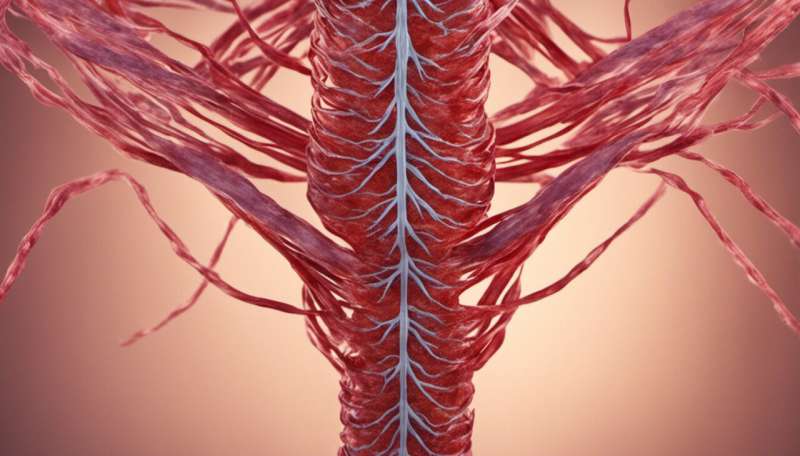Mutation leads to combined hyperlipidemia; genetic targeting may reverse it

(Medical Xpress)—A Yale study has identified the underlying genetic basis of combined hyperlipidemia, as well as a treatment that may normalize the condition. The study appears in Cell Metabolism.
Combined hyperlipidemia is characterized by high plasma levels of triglycerides and LDL cholesterol. The disorder is a major risk factor for atherosclerosis of the coronary artery, carotid artery, and other small and large arteries, leading to heart attack, stroke and limb ischemia.
Until now, very little has been known about the underlying mechanism of combined hyperlipidemia, and no single gene has been clearly linked to the disorder. The Yale researchers focused on the LRP6 gene and the effect of its mutation in mice. The mutation, which was first identified in humans with early onset coronary artery disease and combined hyperlipidemia, causes a cascade of events in diverse signaling pathways that results in abnormally elevated levels of LDL and triglycerides.
In this study the investigators found that the abnormality in the Wnt signaling pathway affects the function of a transcription factor widely known for its association with diabetes and elevated triglyceride levels. They further found that rescuing this pathway normalizes the expression of enzymes regulating plasma lipids and restores normal LDL and triglyceride levels.
A number of studies had previously shown direct or indirect association between Wnt signaling pathway and its coreceptor LRP6, and hyperlipidemia in humans. "Our finding basically establishes the link between them, and most importantly demonstrates that the hyperlipidemia can be rescued by normalization of this pathway," said senior author Arya Mani of the Yale Cardiovascular Research Center.
"Our study opens the way for potential development of novel therapeutics for treating hyperlipidemia, and a favorable outcome for coronary artery disease or survival," she added.
More information: Gwang-woong Go, Roshni Srivastava, Antonio Hernandez-Ono, Gyoungok Gang, Stephen B. Smith, Carmen J. Booth, Henry N. Ginsberg, Arya Mani. "The Combined Hyperlipidemia Caused by Impaired Wnt-LRP6 Signaling Is Reversed by Wnt3a Rescue." Cell Metabolism, Volume 19, Issue 2, 209-220, 4 February 2014. 10.1016/j.cmet.2013.11.023
















